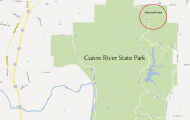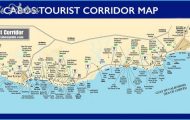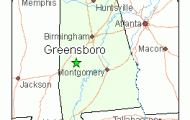Wisconsin Advocacy and Activism
A recognition of the injustices and lack of available programs for Wisconsin’s Latino population led to the turbulent 1960s and 1970s decades of protest, activism, and change. During the 1960s, advocacy organizations emerged, workers protested, and Latinos demanded rights and recognition. Much of the activity
in Wisconsin mirrored other Latino movements occurring in the United States at this time, such as the grape boycott spearheaded by the United Farm Workers in California.
In 1962 the Governor’s Commission on Human Rights released The Migrant Labor Problem in Wisconsin. The report referred to the migrant worker as the low man on the labor totem pole.9 The issues outlined in this report mirrored the same concerns as the report released in the 1950s: substandard housing, unfair wages, abuse, lack of education, and poor working conditions.
Aside from advocacy, changes occurred in Wisconsin’s employment realm. The mechanization of harvesting led to a slight decrease of agricultural workers. Some Wisconsin farmers attributed the decline in Wisconsin’s agricultural sector to the rise of unions and activism. One farmer in Wautoma, a central Wisconsin town known for its cucumber harvest, indicated that while migrants sometimes had rough times, many farmers lacked the financial means and resources to provide the better housing or wages that migrants demanded.10
In 1965 several Wisconsin churches formed United Migrant Opportunity Services, commonly known as UMOS. It became one of the leading nonprofits advocating for Latino and worker’s rights. In 1966 migrant advocate Jesus Salas, a Texas farmworker living in Wautoma, helped lead the March on Madison. Organizers hoped this march of cucumber pickers would garner attention about the migrant experience and its injustices. Following the march, Salas organized the labor union Obreros Unidos (United Workers). One of the union’s initial organizing attempts was at a potato processing plant. This attempt was successful but came with struggles and some losses. After the employer refused to recognize the union, workers went on strike. During the strike, public donations and the American Federation of Labor and Congress of Industrial Organizations (AFL-CIO) supported some workers and their families. However, many workers left to seek other employment or returned to Texas a hardship for migrants dependent on wages from seasonal jobs. Working within the confines of the Wisconsin Employment Relations Commission and State Labor Board, Obreros Unidos filed charges against the plant operator; the owner was found guilty of unfair labor practices and was ordered to financially compensate union members who had been laid off. Ultimately, some successes materialized from organizing against the potato processor. Despite some workers’ returning to Texas or seeking other jobs, Obreros Unidos had gained notoriety and set the stage for future union organizing in Wisconsin.
Latino successes emerged from a series of struggles during this era in Wisconsin. Often, local and state politicians spoke against or belittled the Latino movement.11 Some even advocated for the discontinuation of federal funding to UMOS. Current UMOS Chief Executive Officer and President Lupe Martinez joined the organization in 1969 as an outreach worker based in Wautoma. Martinez recalls working from a school bus parked outside city limits and tapping into a nearby telephone pole for service. Many local farmers disliked UMOS and
banished its workers from their property.12 In addition to the external problems UMOS faced, the organization experienced its own internal upheaval. Many of the Latino activists decided it was time to oust the all-white male UMOS administration and hand the organization to the people it represented: Latinos. Some board members peacefully resigned, while others were not content with the decision. Salas eventually became the first Latino director of UMOS, and the ensuing directors continue to be Latino.




















